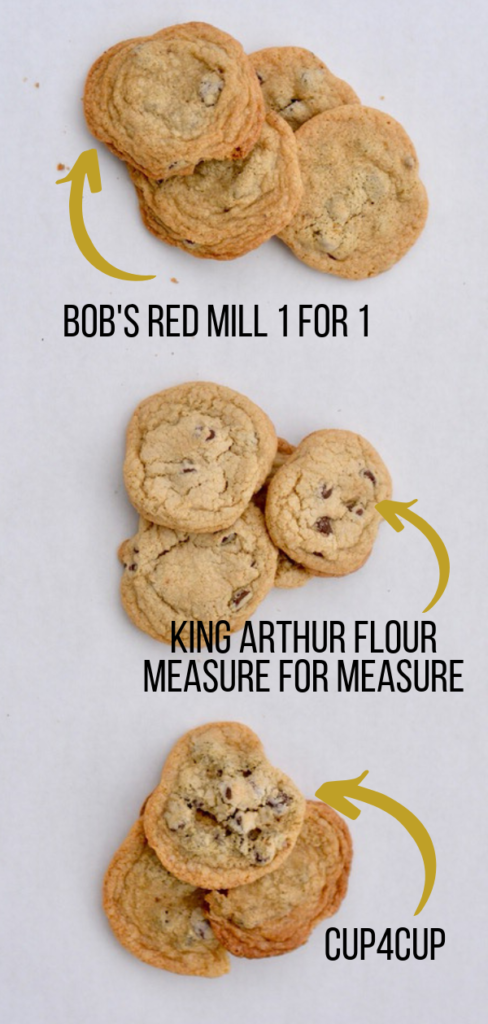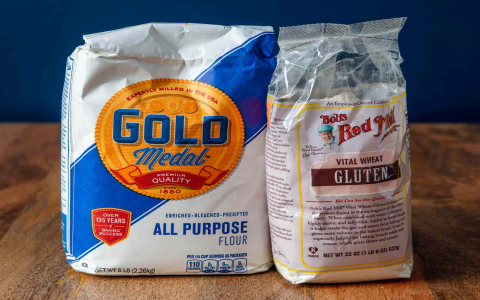So, everyone’s been yapping about gluten-free this and gluten-free that. I figured, alright, what’s the actual difference when you get down to it? I mean, flour is flour, right? Well, let me tell you, I decided to dive in and see for myself. Not because I’m gluten-intolerant or anything, but my buddy Dave is, and I thought I’d try whipping up some cookies he could actually eat without feeling like death warmed over later.

Normally, when I bake, I just grab my trusty bag of regular all-purpose flour. You know the drill. You mix it with your wet ingredients, and it just sort of… works. Dough comes together, batter is smooth. It’s predictable, which is nice when you’re trying not to burn the kitchen down.
Then I picked up a bag of “gluten-free all-purpose baking flour.” Sounded promising. I thought, “Okay, simple swap, how hard can it be?” I tried making my standard chocolate chip cookie recipe. The one that never fails. Famous last words.
What came out of the oven was… well, not exactly cookies. They were flat. They were weirdly sandy. And they basically disintegrated if you looked at them too hard. My first thought was, “What in the world did I do wrong?” The dough itself felt totally different from regular flour dough. It was less stretchy, almost like wet sand, not that nice elastic feel you get from regular flour because of the gluten.
So, I hit the books, or rather, the internet. Started reading up on what this gluten stuff actually does. Turns out, gluten is basically the protein that gives baked goods their structure and elasticity. It’s like the scaffolding for your cakes and breads. Regular flour has it in spades. Gluten-free flour, by definition, doesn’t. That was my “aha!” moment, though it came after a very crumbly batch of “cookies.”
My Big Learnings from Messing Around:
I decided to get a bit more systematic. I bought a couple of different gluten-free flour blends and even some individual gluten-free flours like rice flour and tapioca starch. Here’s what I found out through trial and, oh boy, a lot of error:

- Binding is a big deal. With regular flour, the gluten does the binding. With gluten-free, you often need to add something else to stop your bakes from turning into a pile of crumbs. Things like xanthan gum or psyllium husk. I had to go out and actually buy xanthan gum. Felt like a science experiment. My first attempt without it for some muffins? They looked okay, but picked one up and the bottom just stayed on the tray.
- Texture is a whole different ball game. Regular flour gives you that chewiness in bread, that soft spring in a cake. Gluten-free bakes? They can be denser. Sometimes they’re gritty, depending on the flour blend. I made some pancakes that were more like savory Frisbees. Getting that light, airy texture is a real challenge.
- Moisture absorption varies wildly. I found that gluten-free flours sometimes soak up liquid differently than regular flour. My first gluten-free bread attempt was a brick. A very dry brick. I learned I often had to adjust the liquid content, usually adding more.
- Taste can be different. Some gluten-free flours, especially if you’re using single-ingredient ones like coconut flour or almond flour, have their own distinct taste. This isn’t necessarily bad, but it’s something you don’t get with regular wheat flour, which is pretty neutral. My “neutral” gluten-free blend still had a slightly different, almost earthier, background note.
- It’s not a 1:1 swap, usually. That was the biggest lesson. Just taking your favorite recipe and swapping regular flour for gluten-free flour often leads to disappointment. Some recipes are more forgiving, but for many, especially things that really rely on gluten structure like yeast breads, you need recipes specifically designed for gluten-free flours.
So, what’s the verdict from my kitchen experiments? Regular flour is kind of easy mode for baking because that gluten protein does a lot of heavy lifting for structure and texture. It’s consistent. Gluten-free flour is like playing on hard mode. It requires more thought, often more ingredients (hello, xanthan gum!), and a willingness to experiment. You have to understand what you’re trying to replace and how to mimic it.
I did eventually manage to make Dave some decent gluten-free chocolate chip cookies. They weren’t exactly like my regular ones, but they held together, tasted good, and most importantly, he could eat them. It just took a few more tries and a bit more patience than I originally bargained for. It’s definitely a learning curve, but an interesting one if you’re into figuring things out in the kitchen.
